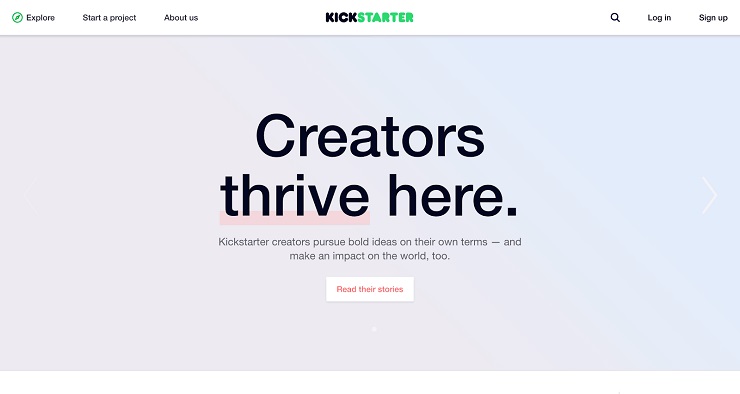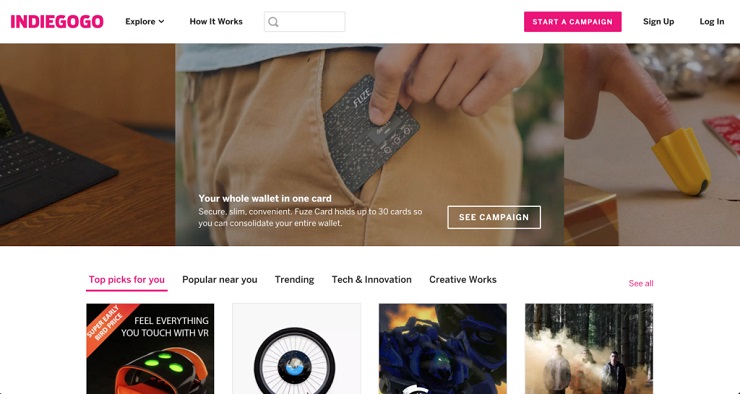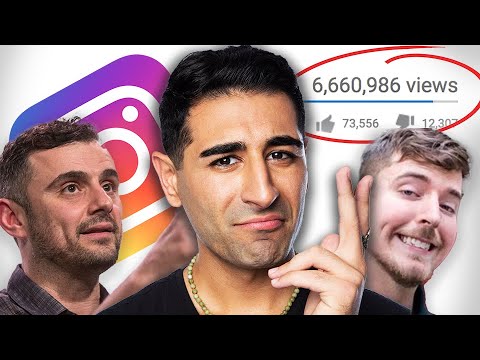Crowdfunding has revolutionized who can start a business. Instead of rehearsing pitches for big-wig investors or wining and dining wealthy relatives, self-starters can turn to the masses to fund their small business ideas…but only if they do it right.
Crowdfunding simply means funding a project, business, or other venture by raising small sums of money from a lot of people. This method often includes offering incremental rewards to financial backers, depending on how much is contributed.
Developed over 20 years ago, crowdfunding has matured into a go-to method for those looking to get their ideas off the ground. No longer are dreamers, developers, and go-getters stymied by limited capital or resources. Crowdfunding has brought to life countless projects and businesses, from watches to beehives to Foundr’s own coffee table book.
Over the years, Foundr has talked to many crowdfunding pros and compiled their best advice for you on how to get crowdfunding for business startups. Now in shiny infographic form!

Want to display this infographic on your site?
Embed this infographic into your website pages by copying and pasting the code below:
Still want to go deeper on this topic? Read on.
Entrepreneurs, Here’s Why Crowdfunding Matters to You
Crowdfunding is changing the way entrepreneurs bring products to market. Crowdfunding allows new projects and ventures to raise money, build brand awareness, and gather priceless feedback—all while still working on product and supply chain development. It also provides an open, honest avenue between businesses and backers, a rare commodity afforded to consumers today.
Thanks to crowdfunding, startups are no longer rewarded based on presentations and pitches. Sure, you should be able to present your business well, but you aren’t limited to doing so on stage or in a boardroom. (To those who hate public speaking, rejoice!)
Crowdfunding also uses your audience and fanbase to your advantage. Traditional methods of startup funding (VCs, bank loans, rich uncles) didn’t care how many Instagram followers or email subscribers you had. Now, crowdfunding allows you to leverage your fans and followers to grow your business, offering rewards in exchange for support.
Crowdfunding has blazed an advantageous trail for entrepreneurs and small businesses. Let’s talk about how to hop on this trail and use crowdfunding to start and fund your venture.
Crowdfunding is Competitive—Make Sure Your Product is Killer
Before we venture too far into the weeds, let’s back it up.
Whatever you’re crowdfunding for, it needs to be awesome. And by awesome, we mean jaw-dropping, eye-opening, flabbergasting … you get the gist.
And we’re not kidding. With over 600 crowdfunding platforms around the world and countless projects entering the crowdfunding scene every day, the competition for both attention and funding has never been greater. In order to stand out, your product has to stand up, tall.
What makes for a good product or venture?
- It meets a need
- It solves a problem
- It excited people
- All of the above
Answer: There isn’t one answer.
Any of these choices would be correct, but you’ve got to pick at least one. (Or, even better, all of them!) Without one of these stipulations, your product could fall through the cracks and be swallowed up by the loud, busy world of crowdfunding. It doesn’t matter which answer you choose, as long as it’s relevant and important to your audience.
Now, determining what’s important and distilling that into a message are two different ballgames. Here’s where to start:
- Determine your target audience and do some research on their demographics and psychographics. Ask yourself questions as they pertain to your product. For example, if you were crowdfunding for a desk accessory (Gather, for example), you’d want to know your audience’s work habits, organizational preferences, design tastes, and financial capabilities. Gather this information through forums, social media, in-person interviews, or good ol’ fashioned surveys.
- Construct your Value Proposition (VP). Your value proposition is basically a simple statement that summarizes why someone should buy your product. This statement should convince a backer that your particular offering will add more value than a similar product would. For example, take a look at Arsenal, a current Kickstarter campaign for a digital camera assistant. Their VP reads “Capture amazing images in any conditions and get complete control of your DSLR or mirrorless camera—all from your smartphone.” It summarizes the gist of the product while simultaneously begging you to continue reading.
- Build your crowdfunding campaign around your VP. As you describe your product, communicate with your backers, and post on social media, always return to your VP and how your product is meeting needs, solving problems, and/or exciting people.
Crowdfunding is Won or Lost Before Your Campaign Begins
So, you’ve got a great product that you know your audience appreciates. What now?
It’s time for the planning and prep phase. This is, hands down, the most important part of crowdfunding.
What’s Your Endgame?
To begin, start at the end. What is the end goal of your campaign? Envision the perfect outcome. Figure out exactly what you need to do to get there. List specific action steps, not broad goals.
Let’s say your end goal is to fund your business and expand your product line. Backtracking to pinpoint specific tasks, you’d have to grow your audience on social media and email so to build awareness around your coming campaign, create marketing and promotional materials for your campaign, such as videos, GIFs, images, and copy, and determine your rewards for financial backers and secure all means of production and distribution.
This list is far from exhaustive. From these tasks, you’d need to backtrack further into weekly and monthly deliverables that ensure you remain on task and adhere to your timeline.
Start Early
Speaking of a timeline, the next step in the planning phase is to start early. (This isn’t so much a step as it is a strong recommendation.) Planning a campaign is complex and can hardly be completed in a month, much less a few days. Give yourself more than enough time to perfect it.
We’ve heard some say to start planning two to three months before launch, but even six months in advance wouldn’t hurt. Some pieces of campaign preparation can’t be forced or fast-forwarded, so it’s best to give them more time than you think necessary. These include:
- Securing press for your campaign. Writing a press release and pitching your product and campaign take time, not to mention how long it takes for journalists to respond (or don’t) and schedule your campaign into their content calendar. Because most crowdfunding campaigns are limited to one or two months, don’t wait until your campaign begins to start seeking press. It’s better to have your audience waiting on you than you waiting on press.
- Creating promotional materials. A crowdfunding campaign is super important and should be treated as such. Subpar photography and copy won’t do, especially if this is your audience’s first impression of your business and/or product. You may have limited funds, but this is where you should invest a good amount. Hire a good photographer and copywriter or do work-for-trade.
- Garnering attention on social media and over email. “Good things take time” hasn’t been truer than when applied to building an audience on social media or growing an email list. And a sizeable audience on both platforms can make or break campaign success. As Khierstyn Ross, crowdfunding product launch specialist, told us, “If you launch your campaign with zero audience, you are launching to crickets.” Launching a campaign to a dependable audience will help you hit the ground running, fast.
Decide What Kind of Funding
It’s important to decide what kind of funding you want for your campaign. The choices are fixed or flexible funding. Fixed funding means that you only keep the money if you raise at least 100% of your funding goal. Flexible funding means that you keep whatever money you raise, even if it doesn’t hit your goal. The choice is entirely up to you, although some crowdfunding platforms only allow one or the other.
Most entrepreneurs go with fixed funding. Why? Well, most projects require a minimum amount of funds to enter production. (This is also how campaigns decide on their funding goal, but more on that later.) Fixed funding ensures that projects can’t be required to deliver if the necessary funding isn’t raised.
When deciding between the two options, look at your overall production and distribution costs. If you can’t create and distribute your product without raising a certain amount of money, we’d encourage fixed funding. But, if you can afford to complete your project if only half the amount is raised, or the product is easily scalable, maybe flexible funding is right for you.
Pick a Platform
Now, it’s time to consider what campaign platform you’ll use. Kickstarter and Indiegogo are the top dogs, although there are over 600 available worldwide. Some other cool sites include TeeSpring (for t-shirts, obviously), Patreon, and Australia-based Pozible.
What’s the difference between Kickstarter and Indiegogo? Between the 2, Kickstarter has a bigger market share. Indiegogo allows a wider range of projects to be crowdfunded, whereas Kickstarter requires that projects create something that can be shared with others. Kickstarter offers fixed funding only, while Indiegogo offers both. If you reach your funding goal, Indiegogo takes 4%, and Kickstarter takes 5%. (Both charge a 3-5% fee on credit card and PayPal payments.)


Other platforms vary in the same ways, offering different packages based on product, project, funding preference, and fees. When determining what’s best for you, make sure you return to step one of the planning processes and remember your campaign’s end goal.
Set Your Funding Goal
After choosing a platform, calculate your funding goal. How much money will it take for your dream to become a reality? (This is the most math you’ll do while reading this post, we promise.)
Time to put your numbers to work. While calculating this, consider everything from production, to shipping, to supplies, to labor. If you’ve paid for advertising or creative help while building your campaign, include this, too, so that you can stay in the green. Don’t forget to factor in fees, and always (always!) add a cushion.
Account for everything, and be sure to analyze every step in your post-funding plan to ensure you’ll have enough money to work with. (Foundr tip: pay extra special attention to shipping costs!)
Create a Killer Project Page
Last, but most certainly not least, create an awesome project page. A professional-grade page that leverages all sorts of media (video, GIFs, images) will do wonders for your campaign. Remember: This is most likely your audience’s first impression of your business and/or product. You may not be pitching to an investment firm, but you should still ensure your brand always puts its best foot forward. Your campaign page is no exception.
As we stated above, shaky photography and last-minute copy just won’t do. You may have limited funds going into this campaign, but this is where you should invest them. Hire solid independent contractors or do work-for-trade. You should at least feature three main mediums:
An Engaging Video
On Kickstarter and Indiegogo, your video will literally be the first thing your visitors see. They’ll most likely watch this before moving down the page. These few minutes should tell the story of your business, product, and the people behind it. (Remember how we said crowdfunding creates an honest avenue between you and your backers? This video is a chance to capitalize on that.) Be simple and straightforward; don’t waste time on a cheesy commercial-esque film. Be passionate and honest—that’s what sets us apart as entrepreneurs, anyhow. To see an example of a great Kickstarter video, check out Gravity’s Kickstarter campaign.
Beautiful Visuals
People love pictures, and your visitors will want to see your project in action. Capture plenty of images to share on the campaign page, and consider creating a few GIFs for fun. Don’t forget about using branded infographics to break down the more complicated parts of your campaign, such as your proposed distribution timeline or perhaps how your product idea was conceived. Foundr’s own Kickstarter campaign used visuals to not only showcase its product but also embolden certain words and phrases, effectively catching the attention of every reader and driving their VP home.

Flawless Copy
Professional sales copy can make or break a major marketing campaign, not to mention the small corner of the Internet that is your crowdfunding page. Because your backers and visitors will be looking for clarity and assurance in your copy, this is not the place to cut corners.
Make sure that your writing answers all potential questions and mentions (multiple times) your project’s value proposition. Remind your readers time and time again why they should support your campaign. For a great example, read up on the Indiegogo campaign “Good Night Stories for Rebel Girls.” It may have you buying a children’s book, even if you have no kids (not speaking from experience or anything).

Make Your Crowdfunding Campaign Soar From the Start
Cue Michael Buffer’s “Let’s Get Ready to Ruuuumble..”
It’s time for your planning and preparation to pay off, literally. After spending months building a beautiful campaign, how do you ensure your efforts don’t nosedive? Listen up.
Day one is critical. In fact, successful campaigns don’t use nearly the entire time allotted to hit their goal. They nail most, if not all, of their target early on with a big initial surge, and this builds a chain reaction of momentum. The week before you launch, remind your audience on social media and email that your campaign is about to begin. Don’t let them forget!
Shoot for lots of funding on day one. Encourage your friends, family, and anyone else close to you to support you early on. Crowdfunding is great in this respect because people outside your target audience can still “donate” to the cause. Funding can have a snowball effect and bump your campaign to the top of the list if successful early on. Consider holding a launch party so that everyone can rally around the campaign as it takes off.
Next, don’t neglect your press coverage. If you’ve contacted writers, bloggers, and journalists, keep your eyes and ears peeled for publications that mention your name. Set up a Google alert so that you don’t miss anything, and be sure to share (read: brag about) any mention of your campaign. This will boost your authority and drive even more backers to your page.
If you can afford it, consider hiring a PR agency with specific crowdfunding experience. An agency, albeit pricey, can point out holes in your promotional strategy and help you fill them while you focus on the bigger picture of the campaign. PR firms focused on crowdfunding can differ in many ways, and the answers to these questions can help you decide which firm is best for you:
- Do they “get” you and understand why you’re pursuing your project?
- Do they understand your target market and have access to this audience?
- Do they have ample storytelling skills?
- Do they have experience with reward planning?
If you’re considering an agency, check out firms like Enventys Partners, Funded Today, CrowdBooster, GoGoStarters, and Agency 2.0.
Another way to garner press is by reaching out to industry influencers. If you understand where your audience hangs out, you’ll know which influencers can help spread the word about your campaign. A heads up: Most influencers will want your product for free, but that’s a small price to pay for promotion to an extended audience.
Regardless of how you or the press discusses your campaign, always keep your message consistent and clear. Never deviate from your and your project’s story, and stay true to your value proposition message.
Finally, remain open and humble. Crowdfunding will draw a crowd (literally) of commentary and feedback. It invites a kind of spotlight and scrutiny that many people are not ready for.
Most of this will be priceless to you (some corporations have to pay for focus groups to gather that type of intel), but some of it will be hurtful and negative. Sadly, that’s the emotional price to pay when putting yourself out there on the Internet. Stay open-minded and be open to connections with others. You never know how others can help you.
Turn Your Launch into a Sustainable Business
There’s no secret formula to the art of crowdfunding. If you’ve got an awesome product to share with the world, crowdfunding can not only help you make it a reality, but it’ll also transform the way you bring it to market and interact with your audience. To make the most out of a crowdfunding campaign, it’s best to be prepared, consistent, and humble.
Check out our catalog of free business courses, from copywriting to Facebook ads, our instructors will provide you with the strategies to transform your launch into a sustainable business.
The post How to Crowdfund Like the Pros and Get (Lots Of) Money for Your Business Idea appeared first on Foundr.
Source :- https://foundr.com Author :- Allie Decker Date :-April 18, 2022 at 03:30AM

